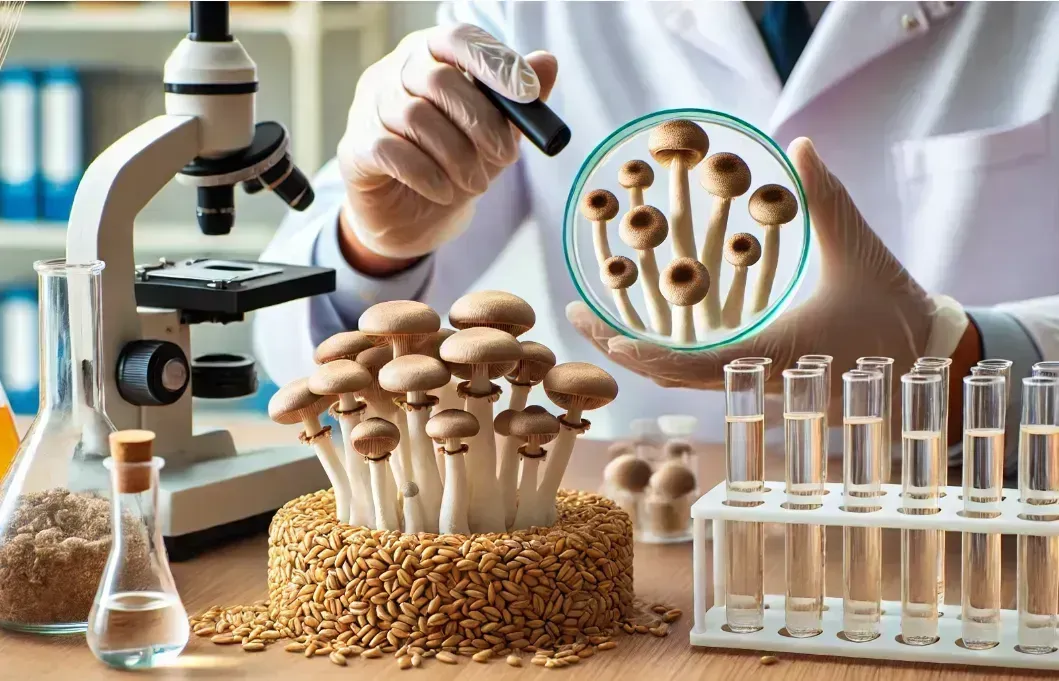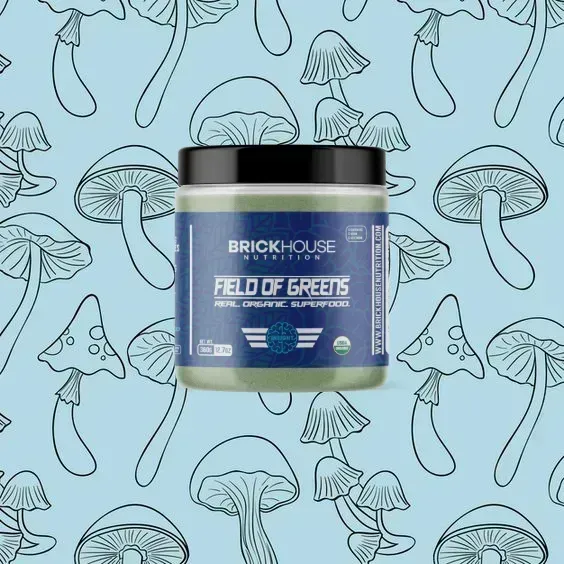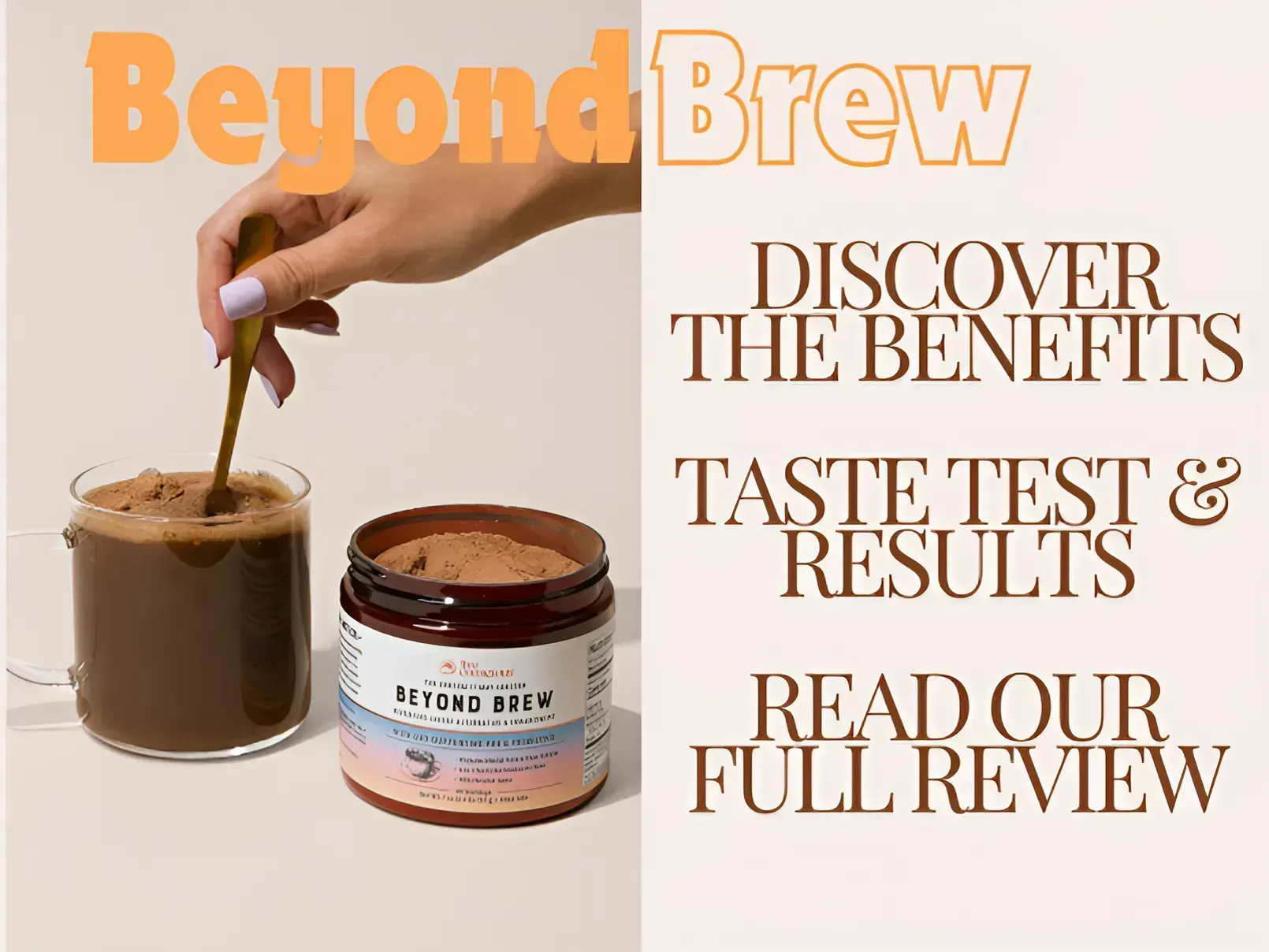As medicinal mushrooms gain popularity for their health benefits, the methods used to cultivate and process these mushrooms have come under greater scrutiny. One topic that has sparked considerable debate is the use of mycelium grown on grain in mushroom supplements. While mycelium itself is an important and potentially beneficial part of the fungus, the inclusion of grain substrate in the final product has raised concerns regarding potency, purity, and potential health risks. In this blog, we’ll explore what mycelium on grain is, discuss its advantages and drawbacks, and provide guidance on how to make informed choices when selecting mushroom supplements.
Understanding Mycelium and Its Role in Mushroom Supplements
Before diving into the specifics of mycelium on grain, it’s essential to understand what mycelium is and why it’s used in mushroom supplements.
What is Mycelium?
Mycelium is the vegetative part of the fungus, consisting of a vast network of thread-like structures called hyphae. These hyphae spread through soil, wood, or other organic materials, breaking down complex substances into simpler compounds that the fungus can absorb. Mycelium is crucial for the fungus’s survival and growth, playing a key role in nutrient absorption and environmental interaction.
In the context of mushroom supplements, mycelium is sometimes used in addition to or instead of the fruiting body (the part of the mushroom we typically see and recognize). Mycelium contains bio-active compounds such as polysaccharides, including beta-glucans, which are known for their immune-supporting properties.
What is Mycelium on Grain?
The term "mycelium on grain" refers to a cultivation method where mycelium is grown on a grain substrate like rice, oats, or barley. This practice is favored by some producers because it is cost-effective and allows for rapid growth of the mycelium. However, in many cases, the grain substrate is not separated from the mycelium before processing. Instead, the entire mixture of mycelium and grain is dried, ground, and used in the final supplement product. This can lead to a product that is less potent and contains more filler than a pure mushroom extract. Mycelium is also more prone to contaminants and mycotoxins, which could lead to negative side effects if not harvested properly.
Potential Health Risks of Mycelium on Grain
While mycelium itself is beneficial, the inclusion of grain in the supplement can introduce several health risks and quality concerns.
1. Dilution of Bio-Active Compounds
One of the primary issues with mycelium on grain is the potential dilution of bioactive compounds, particularly beta-glucans. These compounds are critical for the therapeutic effects of mushrooms, including immune support. When mycelium is mixed with grain, the concentration of these beneficial compounds can be significantly reduced. This dilution means that consumers may be receiving less of the bioactive compounds than they expect, potentially reducing the effectiveness of the supplement.
For example, pure fruiting body extracts typically contain high levels of beta-glucans, often ranging from 30-40%. In contrast, mycelium on grain products may contain as little as 5-10% beta-glucans, with the rest of the product consisting primarily of grain. This lower concentration can diminish the health benefits that consumers are seeking.
2. Allergenic Potential and Dietary Concerns
Grains such as wheat, oats, and barley are common allergens. For individuals who are sensitive to these grains, consuming a supplement that includes grain-based mycelium could trigger allergic reactions. Additionally, even for those without allergies, the presence of grain introduces additional carbohydrates and sugars, which may not be desirable for those on specific diets, such as low-carb or ketogenic diets.
Furthermore, if the grain used in the cultivation process contains gluten, it could pose a problem for individuals with gluten intolerance or celiac disease. Even if the product is labeled gluten-free, cross-contamination during production is always a potential risk.
3. Contaminants and Mycotoxins
Grains are susceptible to contamination by molds, which can produce mycotoxins—harmful compounds that can pose serious health risks if ingested. Mycotoxin contamination can occur if the grain is improperly stored or exposed to moisture. When mycelium is grown on contaminated grain, these toxins can be absorbed into the mycelium and end up in the final supplement product.
While reputable manufacturers typically conduct testing to ensure their products are free from contaminants, the risk of mycotoxin exposure is inherently higher in products that contain grain-based mycelium. This highlights the importance of choosing supplements that have undergone rigorous third-party testing for safety.
Impact of Mycelium on Grain on Product Potency
In addition to potential health risks, the use of mycelium on grain can also affect the potency of mushroom supplements.
1. Reduced Concentration of Active Compounds
As mentioned earlier, the inclusion of grain in the final product can significantly dilute the concentration of active compounds like beta-glucans. These compounds are essential for the therapeutic effects of medicinal mushrooms, particularly in supporting immune health. A product with a lower concentration of these compounds is less likely to deliver the desired health benefits.
2. Misleading Labeling Practices
One of the most significant concerns with mycelium on grain products is the potential for misleading labeling. Some manufacturers may not clearly disclose that their product contains a large percentage of grain, leading consumers to believe they are purchasing a pure mushroom supplement. This lack of transparency can result in consumers paying a premium price for a product that is less potent and effective than they expect.
To avoid this, it’s important to carefully read product labels and look for clear indications of what the product actually contains. Phrases like "full-spectrum" or "whole mycelium" can sometimes mask the fact that the product includes a large portion of grain.
Benefits of Mycelium in Certain Contexts
Despite the concerns surrounding mycelium on grain, it’s important to recognize that mycelium itself has potential benefits, particularly when used in a pure form.
1. Unique Bio-Active Compounds
Mycelium contains a different set of bio-active compounds compared to the fruiting body, including enzymes, prebiotics, and secondary metabolites that support gut health and digestion. Some studies suggest that these compounds can contribute to a broader range of health benefits, making mycelium a valuable component in some supplements.
For instance, certain strains of mycelium, such as those found in Lion’s Mane, produce compounds like erinacines, which are associated with neurological health. These compounds are less common in the fruiting body, suggesting that mycelium could offer unique benefits not found in other parts of the mushroom. Therefore Mycelium can still be a huge benefit if harvested properly.
2. Cost-Effective Production (Why do Companies still use Mycelium?)
Growing mycelium on grain is a cost-effective method for producing large quantities of fungal biomass. This lower cost of production often translates into more affordable supplements for consumers. However, the trade-off is often a lower concentration of the key bio-active compounds that contribute to the supplement’s effectiveness. If companies were to only use real fruiting bodies of mushrooms to make powders, the product will probably cost around $100 for a monthly supply for customers. Therefore, they find cheaper ways to harvest the benefits of mushrooms by using Mycelium so their customers can afford it.
How to Make Informed Choices When Buying Mushroom Supplements
Given the potential drawbacks of mycelium on grain, it’s crucial for consumers to make informed choices when purchasing mushroom supplements. Here’s how you can ensure you’re getting a high-quality product:
1. Prioritize Fruiting Body Supplements
For those seeking the highest potency and therapeutic benefits, supplements made exclusively from the fruiting body of the mushroom are generally superior. These products are less likely to contain fillers and offer higher concentrations of beta-glucans and other essential compounds. Look for labels that specifically state “fruiting body” and avoid those that do not clarify the source of the mushroom material.
2. Look for Transparent Labeling
Carefully read product labels to ensure transparency. The label should clearly state whether the product contains mycelium on grain, and if so, what percentage of the product is made up of grain. Reputable manufacturers will provide detailed information about the composition of their supplements and avoid vague or misleading terms.
3. Check for Third-Party Testing
Third-party testing is critical for verifying the purity, potency, and safety of mushroom supplements. Look for products that have been tested by independent laboratories for beta-glucan content, contaminants, and overall quality. Lab reports should be readily available to consumers, either on the manufacturer’s website or upon request.
4. Consider Your Health Goals
When deciding between fruiting body and mycelium supplements, consider your specific health goals. If you’re looking for a supplement with high concentrations of immune-boosting beta-glucans, a fruiting body extract may be more effective. On the other hand, if you’re interested in gut health or neurological support, a high-quality mycelium supplement may offer unique benefits.
Conclusion: Navigating the Mycelium on Grain Debate
The debate over mycelium on grain in mushroom supplements is complex, with valid points on both sides. While mycelium itself can offer a range of health benefits, the inclusion of grain in supplements raises concerns about potency, purity, and potential health risks. Many emerging mushroom brands are using mycelium grown on grain for their products as it costs them less to make, which could lead to potential health risks.
As a consumer, it’s essential to stay informed and make choices that align with your health goals and preferences. By prioritizing transparency, seeking out third-party testing, and carefully scrutinizing product labels, you can select mushroom supplements that are safe, effective, and truly beneficial for your well-being.
At Fungi Review, we are committed to helping you navigate the complexities of the mushroom supplement market with confidence. Be sure to explore our other blogs in the Fungi Review Potency & Purity series to learn more about how to choose high-quality products, interpret lab reports, and identify trustworthy brands.
Related Blogs:
- Understanding Lab Reports for Mushroom Products: Learn how to read and interpret lab reports to ensure product quality.
- The Ultimate Mushroom Product Checklist: A practical guide to evaluating and choosing the best mushroom supplements.
- How to Identify Trustworthy Mushroom Brands: Learn how to recognize and select brands you can trust.
- Fruiting Body vs. Mycelium: What’s the Difference?: Discover the key differences and which type is best for your needs.
Citations: (Read for more info on mushrooms grown on grain)
-
NAMMEX - Explains why growing mushrooms in North America is not economical for supplements: NAMMEX - Growing Mushrooms in North America
-
Real Mushrooms - Discusses the uses and benefits of mushroom mycelium: Real Mushrooms - Mushroom Mycelium Uses
-
ACS Publications - Discusses the mycelial fermentation of grains for nutritional enhancement: Nawaz et al., 2023 - Mycelial Fermentation of Grains
-
Fungi Perfecti - Details the cultivation process of mycelium and its nutritional content: Fungi Perfecti - Mycelium Cultivation
-
Paul Stamets' Research - Offers insights into the medicinal properties of mycelium: Paul Stamets - Mycelium and Medicinal Mushrooms
- National Library of Medicine (NLM) - Explores the health benefits of mycelium and its bioactive compounds: National Library of Medicine - Mycelium Health Benefits
-
PubMed Central (PMC) - Provides scientific research on mycelium's bioactive compounds: PubMed Central - Mycelium Bioactive Compounds





